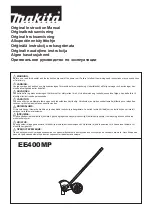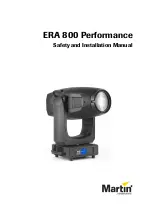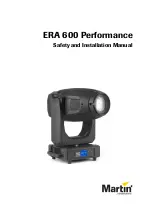
Patch-Clamp Setup
EPC9 Manual
69
recordings, the unshielded holder is strongly recommended. The difference in
background noise level between the two holder types is roughly a factor of two.
The unshielded holder is made from polycarbonate, having low dielectric loss. If you
make your own holder, you should give some thought to the choice of materials. The
insulating parts of the holder should be of a low-loss material, and should have a
hydrophobic surface to prevent the formation of conducting water films.
Polycarbonate fulfills these criteria better than any material we have tried. You can
test the noise level of a holder by mounting it (with the electrode wire installed, but
dry) on the probe input, and measuring the noise using the
Noise Test
facility. The
probe should be in a shielded enclosure, so that no line-frequency pickup is visible
on an oscilloscope connected to the current monitor output at a bandwidth of 3 kHz
or less. A good holder increases the rms noise only by about 10%, e.g., from 95 to 105
fA. Noise sources are discussed in more detail later (
Chapter
10. Using the Patch
Clamp
on page 75
).
The pipette electrode is simply a thin silver wire that is soldered onto the pin that
plugs into the probe's BNC connector. The chloride coating on the wire gets
scratched when exchanging pipettes, but we find that this does not degrade the
stability very much; the wire does need to be re-chlorided occasionally, perhaps once
per month. A wire for the standard electrode holder should be about 4.5 cm long;
after it is chlorided an O-ring is slipped onto it and the wire is inserted into the
holder. Chloriding can be done by passing current (e.g., 1 mA) between the wire and
another silver or platinum wire in a Cl-containing solution (e.g., 100 mM KCl, or
physiological saline). Current is passed in the direction which attracts Cl-ions to the
electrode wire; this produces a gray coating.
Bath Electrode
The main requirements for a bath electrode are that it have a stable electrode
potential and that it does not disturb the composition of the bathing solution. A bare,
chlorided silver wire makes a good bath electrode; however Ag-ions are tolerated
only by som†of cells, such as muscle cells. A good alternative is an electrode
incorporating an agar salt bridge, as illustrated below.
















































